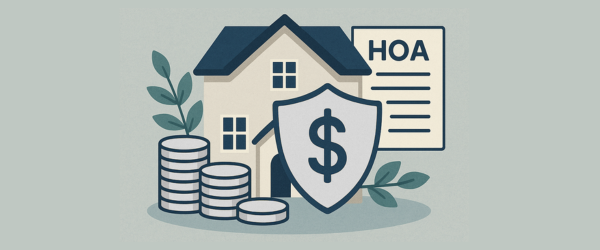Whether you’re new to a homeowners association (HOA) or a longtime resident, living in a homeowners’ association offers unique opportunities and responsibilities. From understanding your governing documents to connecting with neighbors, these ten tips will help you make the most of HOA living and enjoy the full benefits of your community.

1. Read Your Governing Documents
When you purchased your home, you received governing documents such as the Declaration of Covenants, Conditions & Restrictions (CC&Rs) and the Architectural/Landscape Guidelines. These guidelines provide a clear understanding of community standards and homeowner responsibilities, helping you enjoy your home and neighborhood.
2. Get to Know Your HOA Management Company
Most associations partner with a professional HOA management company to support the Board and serve homeowners. Take time to familiarize yourself with your management team and the resources they provide. Many communities now offer digital tools—such as homeowner portals or mobile apps like AAM All Access—to provide 24/7 access to account details, documents, and updates.
3. Connect with Neighbors and Get Involved
One of the greatest benefits of HOA living is the sense of community. Attend neighborhood events, volunteer on a committee, or participate in a block watch program that promotes safety and connection. Building relationships not only creates lasting friendships but also strengthens the fabric of your community.
4. Attend Board and Annual Meetings
Community meetings are where important decisions are made. Attending Board or annual meetings allows you to stay informed, share your ideas, and raise concerns. It’s also a chance to understand better how decisions impact your neighborhood—and, if you’re interested, to run for a Board position yourself. Tools like BoardVue make it easier than ever for Board members to collaborate and for homeowners to stay engaged.
5. Respect Your Neighbors and Shared Spaces
A successful community thrives on courtesy. Be mindful of parking rules, pet noise, and the neighborhood’s quiet hours in general. Simple actions—such as keeping common areas tidy and respecting your neighbors’ property—go a long way toward creating a welcoming and harmonious environment.
6. Submit Architectural Changes for Approval
Thinking of adding a patio, painting your home, or updating landscaping? Submit your plans to the homeowners’ association architectural committee before beginning work. This ensures updates align with guidelines and avoid costly changes later. By following the process, you’ll keep your project stress-free while supporting the community’s overall look and feel.
7. Maintain Curb Appeal
From neatly storing trash receptacles to caring for lawns and landscaping, small actions make a big difference. HOAs often conduct routine inspections to help preserve property values and ensure the association looks its best. By staying on top of maintenance, you’ll not only avoid compliance issues—you’ll contribute to neighborhood pride.
8. Enjoy Community Amenities Safely
If you’re living in a homeowners association that offers amenities such as pools, playgrounds, or fitness centers, use them responsibly. Keep an eye on children around water features or play areas and follow posted guidelines. When everyone uses the community’s common areas with care, they remain safe, enjoyable, and well-maintained for years to come.
9. Be a Responsible Pet Owner
Pets are part of the family, and responsible ownership keeps your community associations clean and comfortable. Always clean up after your dog, especially in shared areas, and follow leash or noise policies. These small steps show respect for your neighbors and keep common spaces pleasant for all residents.
10. Take Pride and Stay Engaged
Your HOA management company and Board are here to help, but every homeowner plays a role in protecting the community. Stay alert, report maintenance issues promptly, and use tools like AAM All Access to communicate with your management team. When everyone participates, your neighborhood becomes more than a place to live; it becomes a community to be proud of.
A successful HOA strikes a balance between structure, communication, and community spirit. With the right knowledge—and tools like AAM All Access to keep you connected—you’ll enjoy the full benefits of HOA living while helping your neighborhood flourish. And don’t forget to attend meetings. 😉

























